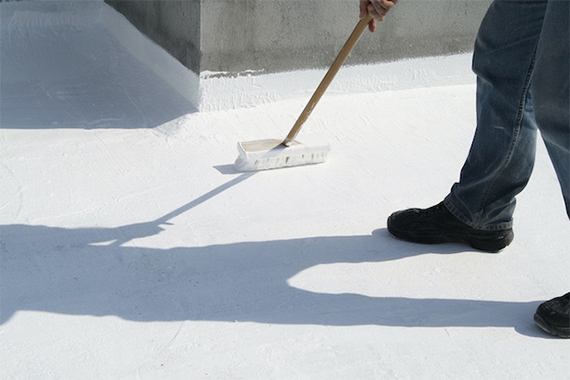
Venator is seeing a marked increase in demand for advanced pigment technologies that can give exterior paints and coatings solar reflective properties and assist with the heat management of buildings. As the race to carbon net zero gathers pace, Venator’s coatings experts are witnessing a significant uplift in questions about its titanium dioxide, barium sulphate and mixed metal oxide pigments from formulators worldwide, who are being asked to help slow down the speed at which the sun heats up the outside of residential and commercial properties.
Buildings are estimated to account for around 39% of all global energy related carbon emissions [1]; of which 28% is operational emissions from energy needed to heat, cool and power them, and the remaining 11% is from materials and construction. Decarbonising the built environment is therefore considered key to getting climate change under control and meeting the COP26 ambition of limiting global warming to below 1.5 degrees Celsius by 2030.
Making it easier for architects and building designers to deflect solar energy, reduce heat gain, and cut occupants’ reliance on air conditioning systems, paints containing titanium dioxide, barium sulphate and mixed metal oxide pigments are known to help reduce the exterior temperatures of buildings.
John Robb, Senior Technology Expert at Venator, said: "Last year, COP26 turned the spotlight on all things environmental, highlighting what the world needs to do differently to get climate change under control. Architects have, of course, been integrating eco technologies into buildings for many years. Fitting solar panels, ground source heat pumps and adding more insulation are just a few of the more obvious ways to cut carbon emissions from buildings. However, something as simple as applying a solar reflective paint to the outside of a building can also have a big impact.”
When specifying pigments to give paints solar reflective properties, Venator is quick to stress the importance of careful formulation to ensure the best overall coating performance.
Continuing, John Robb, said: "There has been a lot of talk over the last twelve months about pushing the total solar reflectance (TSR) of coatings to the next level and creating the whitest of white paints. The key to success in this field lies in balancing the loading of the pigment carefully. For example, barium sulphate is very white at all wavelengths but is a very weak opacifier. You can improve its opacity and reflectiveness by using a high ratio of pigment to resin and creating a thick film.”
"The low amount of resin creates air voids between the particles that provide a dazzling white. However, a resin with voids can be prone to polymer degradation, dirt pick-up, staining and wear, and will invariably need to be reapplied more frequently – which has its own implications on carbon footprint and sustainability. It’s a delicate trade off but ultimately you need to ensure that any incremental improvements in solar reflectance do not upset the broader performance of a coating. We are working with a number of companies across the global coatings sector to do just this – using the variety of solar reflective pigments we have at our disposal.”
Under its ALTIRIS® brand, Venator offers an award-winning range of infrared reflecting pigments that can be integrated into gloss and matt emulsions – across a broad colour palette. Capable of delivering up to 10 points of additional reflectance over well formulated solar reflective coatings, at the existing film thickness, ALTIRIS® pigments are proven to have the capability to improve the overall weatherability and durability of coatings by limiting photo and thermal degradation.
In addition, Venator produces:
- A comprehensive portfolio of barium sulphate pigments (Blanc Fixe) that make it easier to control a coating’s opacity. Used separately, or together with other pigments, barium sulphate can help coatings manufacturers boost the solar reflectance of white paints.
- A range of mixed metal oxide pigments under the REFLECT™ brand that are chemically engineered to maximise total solar reflectance, particularly in the infrared region. Used to keep products cool, REFLECT™ pigments are deployed in applications where heat management is an issue, such as automotive interiors and exteriors, paints for building facades, vinyl siding and fascia systems, and roof coatings and tiles.
Venator is a world leader in the manufacture of pigments and additives for the paint and coatings sector and is continually innovating – helping its customers develop new formulations that offer the highest levels of TSR, alongside all the standard properties that any coating used in real world applications requires.
For more about information about Venator’s solar reflecting pigments and pigments for the coatings sector, go to: www.venatorcorp.com or email coatings_expert@venatorcorp.com




